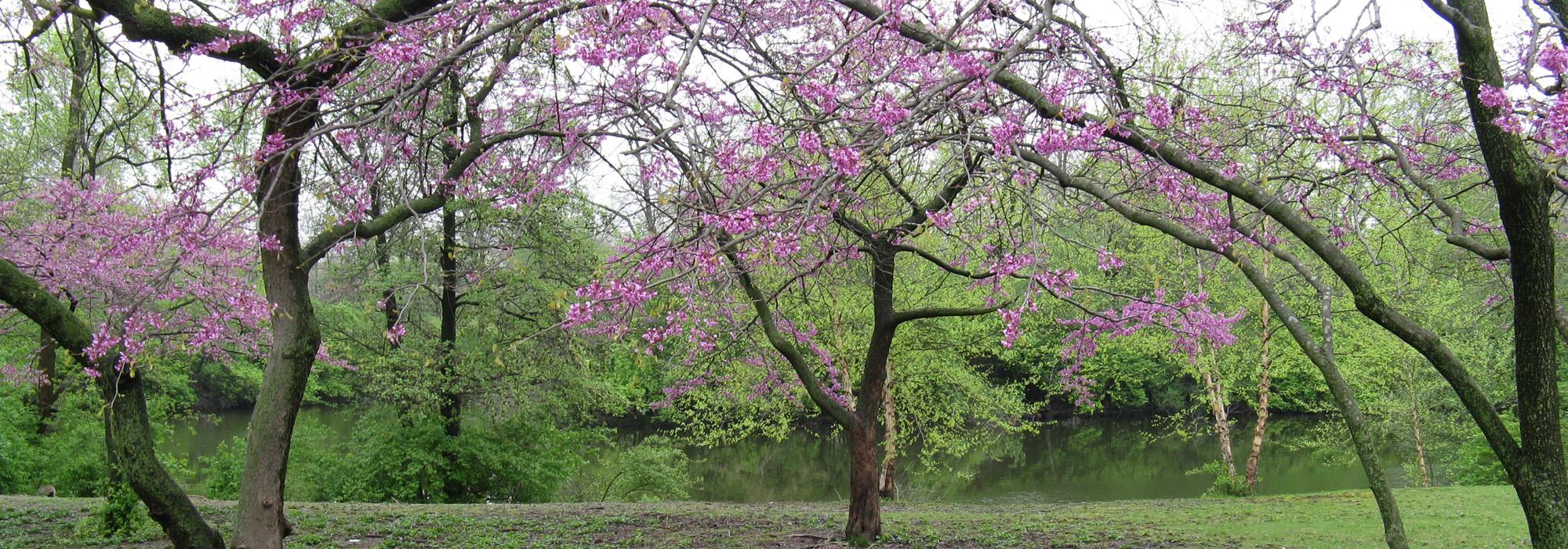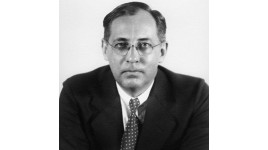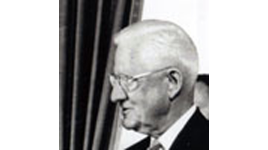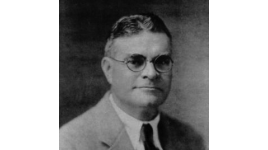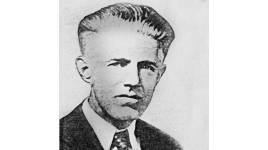Karl Lohmann Biography

Born on June 7, 1887, Karl Baptiste Lohmann was one of four children of George A. and Caroline Schimpff Lohmann of Wilkes Barre, Pennsylvania. Graduating from Pennsylvania State University with his B.S. degree in 1910, he attended graduate school at Harvard University and completed his Master of Landscape Architecture degree in 1914. The City Beautiful ethos of landscape architecture then dominant in landscape design guided Lohmann’s developing interest in civic design and city planning. At Harvard, he explored ideas about community beautification and improvement in his thesis entitled “The Design of a Coal Mining Village.” Upon graduation, Lohmann returned briefly to the coal regions of his native Pennsylvania to promote the use of playgrounds, parks, and planting to brighten dreary mining towns.
In 1915 Lohmann found work with the Detroit (Michigan) City Planning Commission and landscape architect T. Glenn Phillips (Philips and Wilcox), a private consulting firm in Detroit (1915-1917). Toward the end of World War I, in 1918 Lohmann joined the Town Planning Division of the US Shipping Board, where he was engaged in planning emergency towns for ship workers. On September 23, 1918, Lohmann married Jane Richardson England (a 1913 graduate of the Sargent School in Cambridge, Massachusetts); they later raised two children (Elizabeth Pusey Lohmann Faucett and Karl B. Lohmann, Jr.). Lohmann and his wife lived in their 709 West Washington Street home in Urbana, Illinois, from 1921 until his death.
From 1919 to 1921, Lohmann worked for the Pennsylvania State Department of Internal Affairs, Bureau of Municipalities (1919-1921). This office supported a prolific technical design assistance program for state and local public institutions, parks, playgrounds, and parkways in towns and cities across the state. During Lohmann’s short but fruitful time in this office he and his colleagues produced a score or more of site-scale design plans. His design work from this time reflects a formalist, neo-classical sensibility then popular. A typical Lohmann project, still extant, is the Governor Andrew G. Curtin statue, officially unveiled October 19, 1922, on the grounds of Camp Curtin (now Curtin Park), in Harrisburg, Pennsylvania.
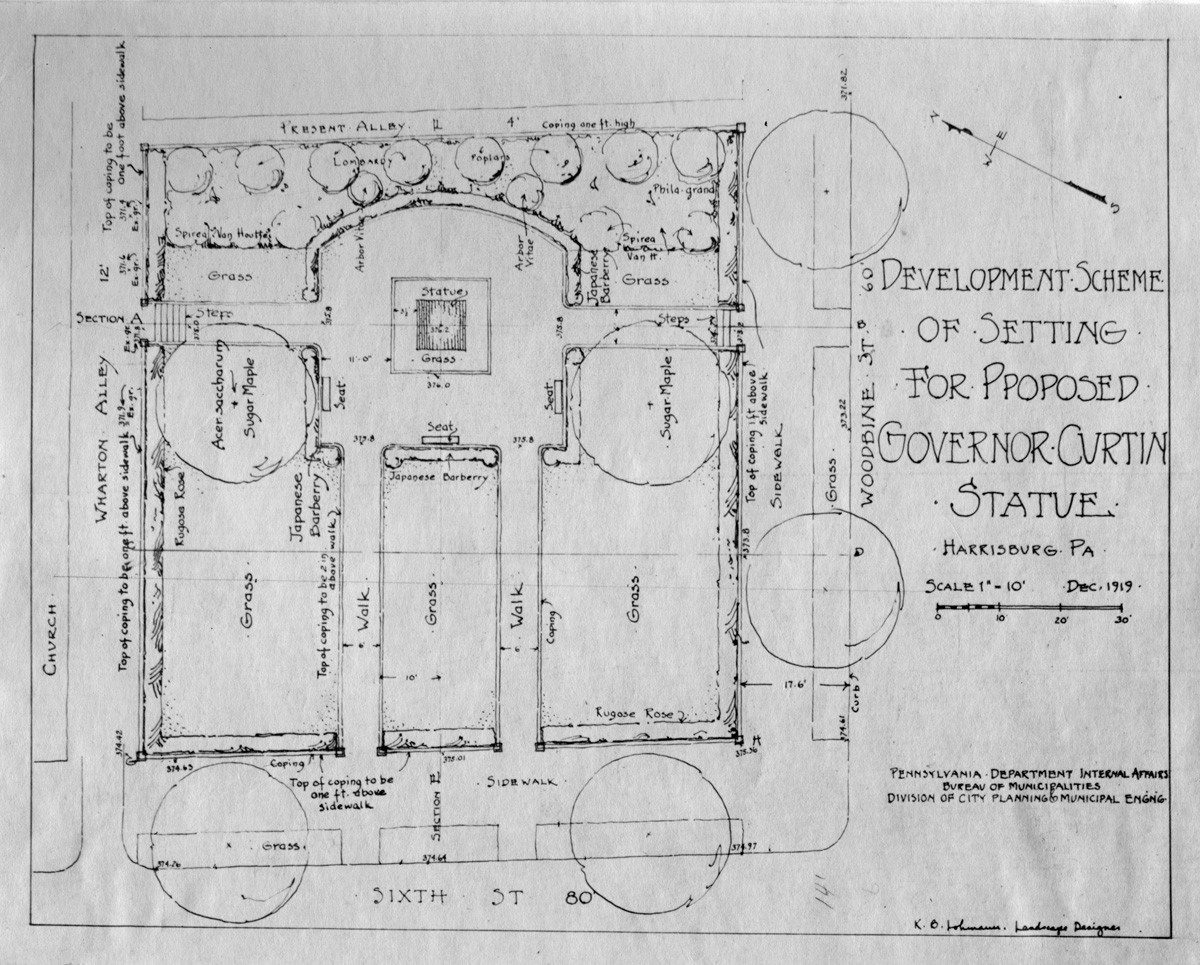
Lohmann is best known as an educator and community planner who contributed generously to the emergence of the mid-century American city planning movement from its roots in landscape architecture. For 34 years he devoted himself to the education of landscape architects and city planners at the University of Illinois, Urbana-Champaign. Starting as an Instructor in Landscape Architecture in 1921, Lohmann participated in the institutional transition of the curriculum in landscape architecture from a division (1926) into an autonomous Department of Landscape Architecture (1931), and finally into the combined Department of City Planning and Landscape Architecture (1954). Lohmann served as program head for seven years (1924-1931), and as Department Head in the final year before his retirement (1954-1955). He was also the head of the College of Fine Arts’ Bureau of Community Planning, established in 1934 for the purpose of community research, engagement, and technical assistance.
Serving as Professor of Landscape Architecture (1921-1948) and City and Regional Planning (1948-1955), Lohmann is credited with developing the first course in Regional Planning in 1933, the first of its kind to be offered in any American university. His passion for regional planning and vernacular townscapes was nourished by deep study and understanding of the morphology of Illinois towns and cities. He was sensitive to the beauties of nature and intensely aware of the importance of maintaining examples of vernacular and natural environments in a rapidly urbanizing region. Photographs and graphic files collected by Lohmann during the interwar period show his interest in agro-industrial and vernacular architecture, drainage patterns and other natural features, planting composition, and contemporary infrastructure such as roads and highways.
Lohmann’s professional reach was extended by many students both domestic and international (notably China and India). One of his star pupils was Philip Lewis who, in pursuing his own long teaching career at the University of Wisconsin, Madison, also conveyed Lohmann’s teaching on landscape planning into a conservation legacy for protection of regional waterways and other landscape assets in the State of Wisconsin and the Upper Midwest. Anecdotal personal accounts from some of Lohmann’s students are somewhat lackluster. Compared to his more theatrical colleague Stanley White, and the fierce Florence Bell Robinson, this is understandable. “He was the least colorful Prof[essor] of the ‘Big Four’,” reports one former student. Lohmann is further described as a “friendly, dignified, and competent teacher, with a controlled sense of humor.”
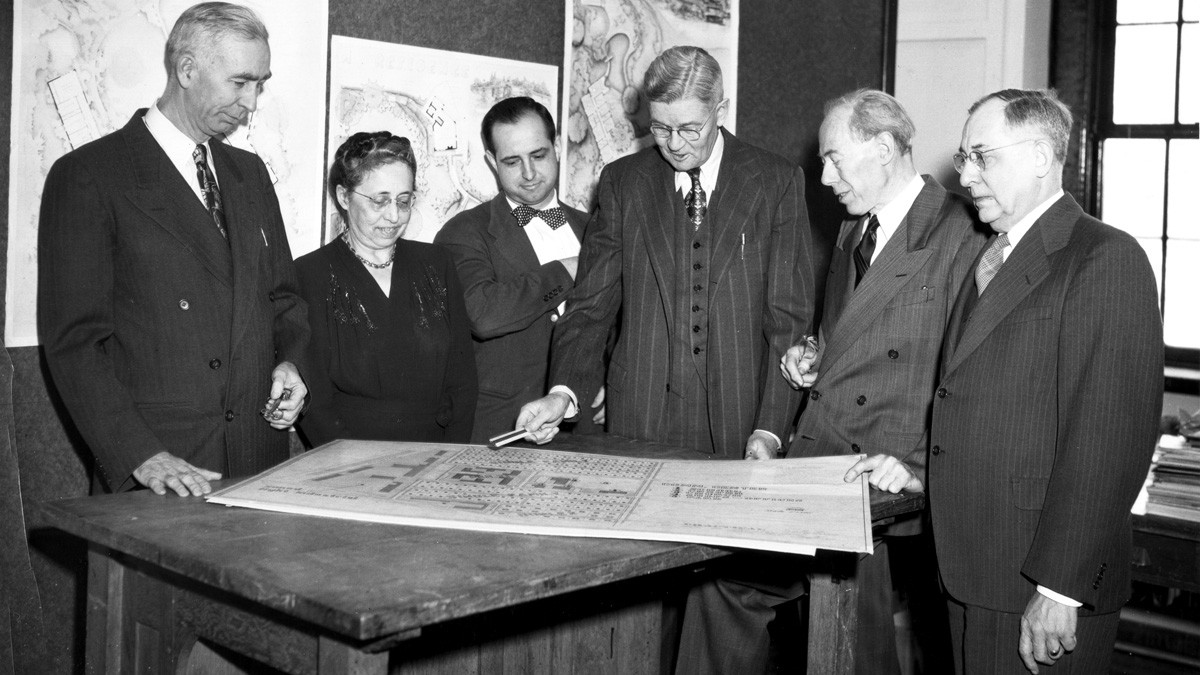
In both teaching and private consulting, Lohmann’s special interests included regional planning, development of park and recreational resources, and the design of golf courses and residential land subdivisions. A prolific writer, Lohmann authored scores of pamphlets, technical reports, articles, and textbooks on the subjects of local and community planning in Illinois cities and towns, recreation and conservation planning, and the status of planning as a field in general. During his long teaching career, Lohmann also continued to undertake occasional extramural design and planning commissions, notably a master plan for the Rutgers University campus with St. Louis planner and academic colleague Harland Bartholomew (1927). In 1938 he outlined a long-range park plan for the State of Illinois that provided opportunities for recreational driving and scenic enjoyment. Other designs and plans for public and institutional clients include projects in New Orleans (1928), Champaign County (Illinois) Park and School Districts (1935-1936, 1954, 1959), Winnetka, Illinois (1955-1957), and a campus landscape plan for Fredonia State College, New York (1957-1958).
Despite broad acknowledgment for his most influential work—Principles of City Planning (1931), Lohmann is not as well-known as many of his contemporaries. However, his intellectual community comprised the leading planners and progressives of his time—a “Who’s Who” of contemporary figures in planning and urban design. Significant correspondents and collaborators include (housing specialist) Carol Aronovici, Harland Bartholomew, Joseph C. Blair, Charles DeTurk, Henry V. Hubbard, Evert Kincaid, John Nolen, James S. Pray, Hideo Sasaki, Stanley White, and Henry Wright. Lohmann cherished several large-format photographs showing him with colleagues at gatherings of the National Conference of City Planners in front of the White House in Washington D.C. (1927), and at an American Society of Landscape Architects (ASLA) banquet held in Boston (1954). He was a member of ASLA, American Institute of Planners, American Society of Planning Officials, Illinois Association of Park Districts, and the Delta Upsilon and Gamma Sigma Delta fraternities.
In later years, Lohmann’s commitment to local planning initiatives grew more concentrated, and he became deeply involved with the Champaign County Planning Commission (serving six years as Chair), and local conservation groups (executive committee member of the Izaak Walton League of Champaign County, and a leader in the establishment of the Champaign County Forest Preserve). He was appointed Commissioner of the Urbana Park District in 1949, and subsequently elected President of that Board. Lohmann was named to ASLA’s Council of Fellows in 1955 for “outstanding contribution to the profession of landscape architecture.” Lohmann was also President of the Champaign County Historical Society, a position he held at the time of his death.
Karl Lohmann died on January 17, 1963, in Urbana, Illinois, at the age of 75. A memorial statement prepared by the University of Illinois Senate recognized his “unselfish devotion” and “intense dedication to the improvement of human environment through teaching, research and writing… [which won for him] a legion of friends, collaborators, and admirers throughout the world.” The Urbana Parks District has dedicated a small park in Southeast Urbana to the memory of Karl Lohmann.



